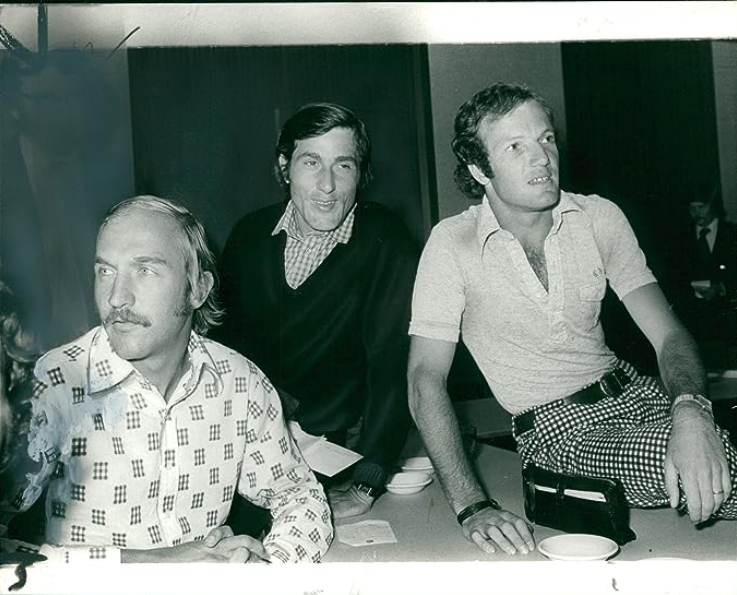Major tournament committees never had an easy job. Given a pile of national and regional rankings–sometimes many months out of date–and another pile of entry forms, they had to decide who could play their event. Then, with the field in place, they had to decide on the seedings.
It was an art, not a science. Rankings were published just once a year. Beyond the first ten, few lists compared players across national borders. In both ranking lists and entry decisions, there were biases, both acknowledged and obscured. Players complained of a “star system,” in which famous names were given priority over superior players. Insiders, especially members at clubs where tournaments were held, had an edge. Young players benefited from well-connected coaches.
So it had been for half a century. Tournament entries hadn’t always been an issue: There was usually enough room in the bracket for everyone. In the early days, draws were arranged at random. It took a run of disastrous bad luck for officials to decide to keep top players away from each other. At the US National Championships in 1921, the paths of the two best men players–Big Bill Tilden and Little Bill Johnston–intersected in the fourth round. The women’s draw was even worse: Visiting sensation Suzanne Lenglen drew home favorite Molla Mallory in the second round. It is no exaggeration to say that the latter quirk of fate–and Suzanne’s loss by retirement–altered the course of tennis history.
Within six months, USLTA tournament draws were seeded.
In 1973, the system underwent a change almost as significant as the adoption of seeding. On August 23rd, the new men’s players’ union, the ATP, released its first set of rankings.
There was no bias in the ATP’s calculation, aside from the tendencies of an imperfect algorithm. Players were given points for their performance at each tournament, then assigned an overall total based on their average over the past year.
The ATP’s list didn’t immediately rise to the top of the heap. The same week, the US Open announced its seeding lists, based on
the U.S. Lawn Tennis Association rankings, Commercial Union Grand Prix points, World Championship Tennis records, and–for the first time–a statistical approach consisting of a new computerized ranking system developed by the Association of Tennis Professionals.
Information overload, perhaps. Committee members couldn’t decide between Ilie Năstase and Stan Smith, so they awarded the two men co-No. 1 seeds. (The ATP ranked them first and third, respectively.) The committee also acknowledged surface preferences, something that the single-number ATP formula ignored. Dirtballer Manuel Orantes ranked second on the new computer, but he was seeded eighth on the grass at Forest Hills.
Quibbles about the ranking formula are as old as the system itself. The approach of averaging tournament results, in particular, incentivized players to stick to their best surface and skip smaller events; it was possible for someone to sit out a week and see his ranking go up!
The important thing, though, was that the imperfections were the same for everyone. An algorithm could be tweaked; a small group of entrenched bureaucrats could not. Bill Scanlon, then a 16-year-old beginning to gain attention as a promising junior in Texas, later called the ATP rankings “the one perfect truth.” They weren’t perfect, but that wasn’t the point. The formula provided objective targets free of favoritism.
The biggest winners were the deserving players on the fringes. Nastase and Smith would’ve been seeded anywhere regardless of the system. Most people could agree on the top ten, give or take a name or two. But what about an American teen who grew up playing in public parks, as Bobby Riggs had done in the 1930s? Or the rising number of challengers from Eastern Bloc nations without a long history on the international scene? Outsiders could now be judged more on their performance, less on their reputation and connections.
The players, in short, had gained even more control over the game. Within a few years, most tournament committees had given up on the job of determining entries and seeds themselves. Most fans probably didn’t notice the difference. But the rise of computer rankings set the stage for a more meritocratic, more inclusive sport.
* * *
This post is part of my series about the 1973 season, Battles, Boycotts, and Breakouts. Keep up with the project by checking the TennisAbstract.com front page, which shows an up-to-date Table of Contents after I post each installment.
You can also subscribe to the blog to receive each new post by email:
